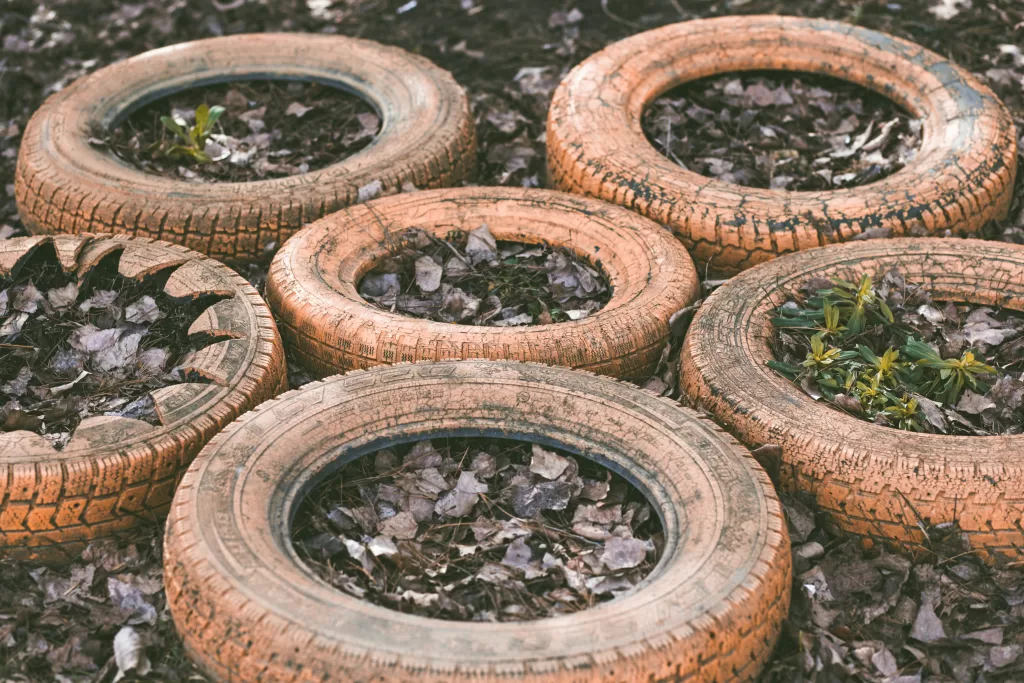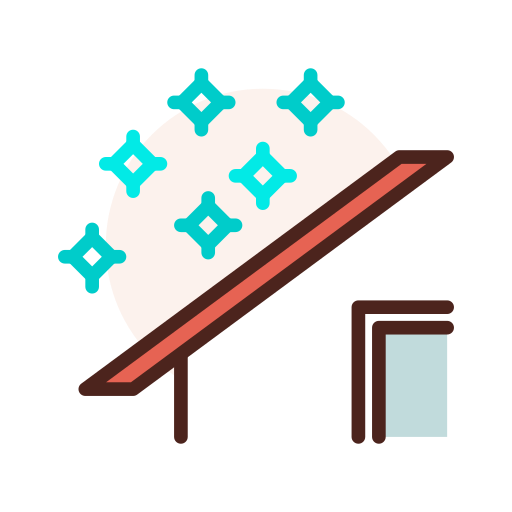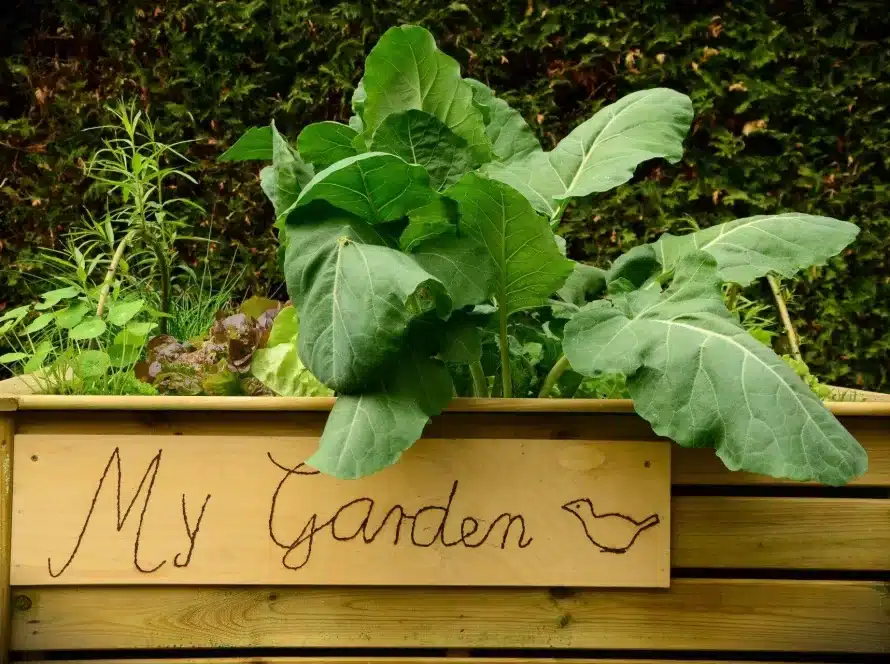So, you want to be a gardener but are unsure where to start? You’ve learned your spring frost date and whether the cold is good for your plants.
You planted your seeds in the ground, but now you’re unsure what else is left. Well, have you considered mulching? What about your garden’s soil type?
As it turns out, there’s more to consider regarding gardening than planting seeds. You don’t have to use mulch, but it can help your garden — if you know what you’re doing.
Now you’ve got another task: finding the best mulch for gardens. Below, we discuss what mulch is, which types you should consider, and how it interacts with different soil types.

What Is Mulch?
You’ve probably seen flower beds covered with bark or straw and wondered what the point was. Mulch is any substance used to cover soil’s surfaces. Mulch can be decorative, but it serves a pragmatic purpose too.
Mulch helps keep and conserve water inside the soil and protects it from erosion. The covering keeps soil and plant roots cool in the summer and keeps them from frosting in the winter.
You can control weed growth via mulch. The soil coating smothers unwanted plants so they can’t grow through the plant bed. Certain kinds of mulch can add nutrients to your soil.
Types of Mulch
We discussed how mulch can be decorative and functional. But how do you group mulch beyond its functionality? There are two kinds of mulch: organic and inorganic.
You’ve seen us mention organic mulch, but what is it? First, let’s cover organic mulch. Organic mulch contains all-natural materials and nothing synthetic. You’d use organic mulch to add nutrients to the soil.
For example, you can add organic mulch to sandy soil to increase its nutrients. Organic mulch can suppress weeds, but it’s an impermeant solution.
Organic mulch works best for vegetable gardens. Here are some types of organic mulch:
Bark
Bark is the most popular type of wood mulch. It’s best used around trees and shrubs — areas of your garden bed you’re not liable to dig. Bark also serves excellent decor for walkways.
Bark mulch is hard to mix into soil. So it can be a hassle to move when adding new plants. Despite this, plants still get nutrients when the bark decomposes.
Bark compensates for this with its longevity. The woody material lasts longer than finer organic mulches.
Compost
Compost comes from various materials in different stages of decomposition. Manure is a type of compost and is dark brown and crumbly. It helps suppress weeds and leaches nutrients into the soil.
Mushroom compost initially helps grow mushrooms. Once it’s spent, the substance gets bagged for soil conditioning. Like manure, mushroom compost suppresses weeds and adds nutrients to soil.
Sandy soil may benefit from compost mulch. It can add much-needed nutrients for gardening.
Straw
Vegetable gardeners use straw mulch because it keeps soil and soil-borne diseases from harming low-hanging plant leaves. Straw helps keep pathways from becoming too muddy.
Perhaps the best thing about straw is that it lasts the entire growing season due to its slow decomposition. Straw mulch is a nice place for beneficial insects, like spiders, to live and catch garden pests.
Unlike bark, straw is easy to rake into piles. This makes movement easy and allows gardeners to easily plant new crops.
Inorganic Mulch
Inorganic mulch is made of inorganic or synthetic materials. Inorganic much is better at blocking weeds and retaining water. However, it doesn’t add nutrients to your soil.
Gravel and Stone
Gravel and stone work in areas that need good drainage or with plant beds that enjoy a little heat. Gravel and stone drain well because rocks can only lie so close together.
This mulch absorbs and retains heat during the day. Gravel and stone aid nutrient-rich soil that holds too much water, like clay. It helps with herbs and rain gardens.
Soil Types and Mulch Interaction
Mulch is useless if you don’t understand what kind of soil is in your garden. There are six general soil types:
- Clay
- Sandy
- Silt
- Loamy
- Peat
- Chalky
Clay or heavy soils contain over 25% clay material and are very fertile because of all the nutrients inside the clay particles. However, they have their disadvantages.
Clay soil holds a lot of water because of the capillary action between the small spaces between the clay particles. Capillary action is the movement of liquid through or along another material against gravity.
Put simply, capillary action is the soil sucking water into itself like water through a straw. Clay soil drains slowly and takes a while to warm up during the spring.
Clay soil doesn’t have much springiness, so it compacts when stepped on while wet. It bakes over and cracks during the summer. This type of soil smears when touched and is sticky when wet.
Heavy soils can be difficult to work with. But clay is easier to work with when you add organic materials — like manure. It keeps the clay from hardening.
Mixing in bark granules can help break apart clumpiness. Gravel and stone work best if you want a mulch that’ll break up clumps and stay in place.
Sandy Soil
Sandy or light soil holds large amounts of sand and little clay. Sandy soil drains fast after it rains (or watering) and is easy to garden. They warm up quickly in spring, but their rapid drainage means they dry out fast.
Sandy soils have few nutrients, which get washed out via rain and watering. These soils are often very acidic. Sandy soil feels gritty and falls through your fingers when held.
You can add compost to light soil to help the loose material form into nutrient-rich crumbs and help retain water.
Silt Soil
Silt is a fine dust that you can compact via treading and garden machinery. Silt’s fine texture makes it more prone to wind and water erosion if left uncovered.
However, it has more nutrients and holds water better than its sandy counterpart. As a result, it’s often fertile. Adding straw mulch helps keep silt soil from eroding and adds organic materials.
Loamy Soil
Loams are a mixture of clay, sand, and silt. Specifically, loamy soil is all the best parts of these three soil types combined. Loams are fertile, well-draining, and easily workable.
You can classify loams as clay loam or sandy loam. But this depends on which soil particles are the most prevalent.
Loamy soils are great for gardening but sometimes need organic materials added. Mulching isn’t necessary, but it helps when cultivating the soil. Soil cultivation is when you loosen soil to bury weeds, debris, and mulch.
Cultivating helps break up and reactivate the organic material inside the mulch. You’re allowing nutrients to reach deeper into the soil and refreshing your garden’s aesthetic.
You may have heard people compare cultivation and tilling. The difference is cultivating required digging a couple of inches at most. Tilling may require digging up to a foot deep.
Peat Soil
Peat soils contain mostly organic material. They’re fertile and hold a lot of moisture. But it’s rare to find peat in gardens. Peat is often in wetland areas, like bogs, swamps, and marshes.
You can buy peat moss (or sphagnum moss) for gardening. Many people advise against using peat for gardens. The substance helps capture carbon dioxide in bogs.
Peat releases CO2 when harvested and contributes to climate change. Peat is a non-renewable resource, so it’s not easy to replace the stripped substance within wetlands.
Non-sustainability aside, you don’t want to plant in peat and nothing else. It’s fertile but breaks down too fast. Once degraded, it compresses, which suffocates roots.
People suggest using peat as mulch. While it retains water well, it’s nearly impossible to rewet when dry. The surface begins to repel water, which makes it a terrible covering.
Peat works best as a soil amendment. Use it to improve the quality of your soil with another type of mulch on top.
Chalky Soil
Chalky soils are either light or heavy. Regardless of particle composition, chalky soils are mostly calcium carbonate and are very alkaline. Alkaline soils have high amounts of calcium, sodium, and magnesium.
Chalky soil has low acidity, and Ericaceous (lime-hating) plants will struggle to grow due to the high alkalinity. Examples of Ericaceous plants include blueberries, azaleas, and rhododendrons.
These soils sometimes contain lumps of chalk-like white stones. Many chalky soils have low fertility and are free-draining. Variations of chalk soil containing clay can better hold water and have more nutrients.
Even alkaline-loving plants have trouble with chalky soil’s inability to hold water. Adding straw mulch can help retain moisture.

Find the Best Mulch for Your Garden

Compare Quotes from Top-rated Landscaping Contractors in your area.
Finding the best mulch for gardens is more complicated than buying a bag from the nearest gardening store. You must understand what works best for your yard’s soil type.
Don’t know where to start, well you’re in the right place. Alpha Living can help you find experienced and certified landscapers near you.
We’ve got you covered. Enter your zip code right here to get free estimates from landscaping experts in your area.



Facebook
Comments